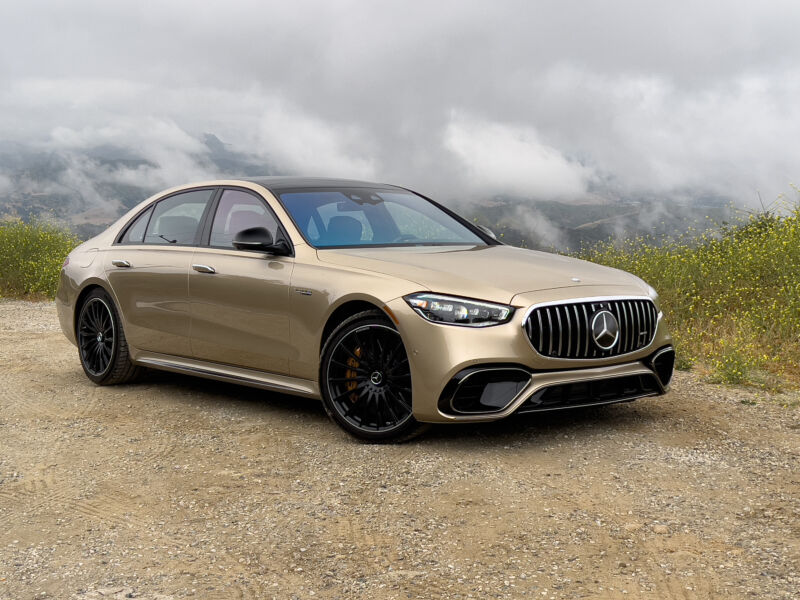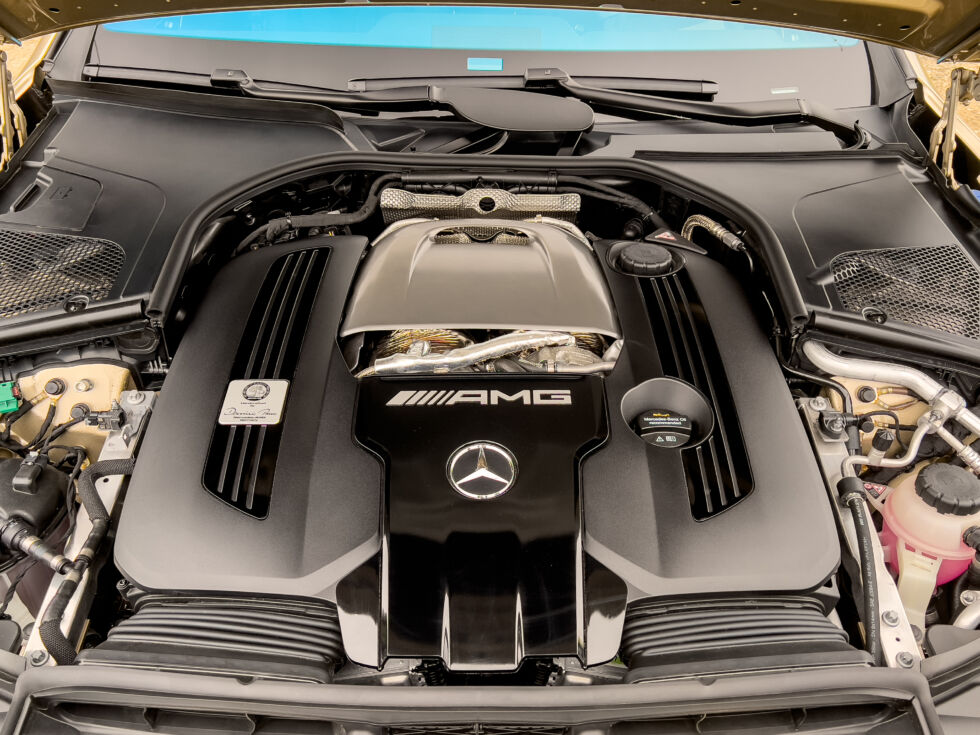
SANTA MONICA, CALIF.—What happens when you stick a whole load of F1-spec lithium-ion cells in a big luxury sedan? That's the question that Mercedes-AMG decided to answer with its latest plug-in hybrid, the S 63 E Performance. It's a rare example of direct technology transfer from racing to a road car, albeit one that indulges its occupants with massages and even a beverage fridge.
This is the second S-Class we've tested recently; in 2022, we tried out the mild hybrid S500 4Matic, which impressed us with its technology and its comfort. And this is actually the second plug-in hybrid S-Class to be offered on the W223 platform—the $123,700 S580e combines a straight-six gasoline engine and electric motor and should be starting to appear in dealerships already.
This is not that car. No, this is a Mercedes-AMG, which means it's been worked over by the company's in-house tuning division to make it all a little bit... extra. AMG started as an independent tuning operation in 1971 and rose to fame by building hotted-up road and racing versions of Mercedes models. It's also not due out until the end of the year, so we can't tell you how much it will cost, though with options, you can probably expect to get close to (or exceed) $200,000.

Big, powerful sedans have been AMG's calling card, from the AMG Mercedes 300 SEL 6.8 that won the 1971 24 Hours of Spa in Belgium to the AMG Hammer, a mid-80s E-Class with a 5.0 L V8 shoehorned into the engine bay. In 1990, the relationship between Mercedes-Benz and AMG got closer when the two signed an agreement that meant AMG mods and vehicles were sold in official Mercedes dealerships. Then in 1999, Mercedes bought a majority stake in AMG before buying the rest of it in 2005.
And this is a big, powerful sedan. The S 63 E Performance—S 63 from here on out—uses an entirely different plug-in hybrid powertrain to the more pedestrian S580e. Instead of an inline six, there's a twin-turbo V8, hand-assembled by a single engine builder; their signature on a small plaque is about the only interesting thing to look at under the hood.
This AMG-specific 4.0 L V8 has been seen in other AMG applications—here it generates 603 hp (450 kW) and 664 lb-ft (900 Nm), which on its own would already make for a very powerful car. It's a hot-V configuration, where the turbochargers live above the engine between the banks of cylinders, and the integrated starter/generator is driven by the 400 V hybrid traction battery. The V8 sends power to all four wheels via an in-house nine-speed dual-clutch transmission.

That battery is also completely different from the one you'll find in the S580e. Instead, the S63 uses the same cylindrical cells you'd find in Lewis Hamilton's F1 race car, only you'll find many more of them; while the F1 car has a storage capacity of a little over 2 kWh, the S63's battery pack amounts to 13.1 kWh—almost half the size of the battery pack you'd find if you opened up the S580e. The AMG pack runs at 400 V, and the cells are directly liquid-cooled to ensure the pack is always at its optimum temperature (113° F or 45° C).
reader comments
32